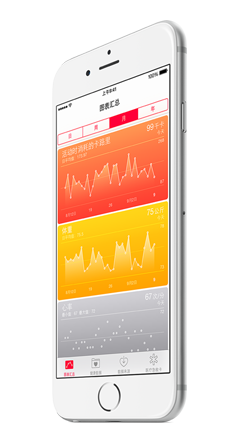
Now mobile phone basically with battery is lithium ion battery, so the following is about knowledge in view of the lithium ion battery charging. Ni-mh battery is different, don’t talk here.
1. Nominal voltage 3.7 V lithium ion batteries (3.6 V), charge cut-off voltage 4.2 V, 4.1 V, according to the label of batteries have different design). (lithium ion battery core specification is: lithium ion secondary battery)
2, requirements for lithium ion batteries (GB/T18287 2000 specification) : first of all, constant current charging, which must be current, and the battery voltage is increased gradually as the charging process, when the battery voltage of 4.2 V (4.1 V), change of constant current charging for constant voltage charging, the voltage must be current, depending on the degree of saturation batteries as the charging process continue to gradually reduce, when reduced to 0.01 C, think charging termination. (C is a nominal capacity battery control current representation, such as battery capacity is 1000 mAh, 1 C is the charging current is 1000 mA, attention is mA not mAh, 10 mA is 0.01 C.) 0.01 C5A specification representation is, of course, I here to simplify.
3, why think 0.01 C for the charging end: this is stipulated in the national standard GB/T18287-2000, are also discussed. , generally 20 ma as end in the ministry of posts and telecommunications industry standard YD/T998-1999 is also such regulations, that no matter how much battery capacity, stops the current 20 ma. National standard regulations 0.01 C help charging more full, good through the identification on the part of manufacturer. In addition, the national standard rules on the charging time not more than eight hours, that is to say even if haven’t reached 0.01 C, 8 hours arrived, also say that charging is over. (quality no problem of the battery, should be within 8 hours at 0.01 C, battery quality is bad, also meaningless waiting)
4, what the difference between battery is 4.1 V or 4.2 V: consumers are indistinguishable, it depends on batteries manufacturer’s product specifications. Some brand of batteries is 4.1 V and 4.2 V is universal, such as A&TB (Toshiba), domestic manufacturer is 4.2 V, but there are exceptions, such as tianjin lishen is 4.1 V, but it is also according to the 4.2 V).
5, batteries charging of 4.1 V to 4.1 V, what will happen: can make the battery capacity increase, the feeling is very good with, increase the standby time, but will shorten the service life of the battery. Such as the original 500 times, reduced to 300 times. Likewise, the 4.2 V batteries, the overcharge, will shorten life. Lithium ion batteries, it is very delicate.
6, since the battery with protection board, whether we can rest assured: no, because the parameters of expiry of the protection board is 4.35 V (this is good, and poor in 4.4 to 4.5 V), the protection board is one thousand, if every time the overcharge, the battery will soon decay.
7, how much of a charging current is appropriate: theoretically, the smaller the battery is good. But you can’t to a battery charging wait for 3 days. National standard stipulated by the low charging rate is 0.2 C (charging arbitration system), still above the 1000 mah capacity of the battery, for example, is 200 ma, so we can estimate the battery only can charge more than five hours. (mAh capacity = current mA * h)
National technical supervision departments testing li-ion battery capacity, 1 C is the high rate of charging, low discharge of 0.2 C, with time to calculate the capacity value, test times, 5 times one time capacity reached end of the test. (that is, there are five opportunities, if the first test is qualified, the back of the four do not) allowed once precycling before detection, with 1 C is the constant current charging 4.2 V namely stop, instead of the back of the process of constant pressure to 0.01 C, not 14 hours more.
8, lithium ion battery to withstand how much charging current: when manufacturers test can be very high, but the elevation specified as 1 c rate, also more than the battery, for example, an hour can be filled. Such a large charging current, then the battery can bear? For the current lithium ion batteries, it is something. There is no national standards for the charger, which is performed by ministry of posts and telecommunications industry standard YD/T998 1999/2, which sets the charger current shall not be greater than 1 c.
9, what is the life, simple say is refers to the battery after N times, 1 c, 1 c discharge capacity decreased to 70%, N lifespan. At this time Is not to say 300 times also can use, can’t be used 301 times. National standard specified life should not be less than 300 times. We usually use conditions are not so harsh testing, life will be longer.
A: what are the precautions for batteries used in the next article: no
Copyright statement: global battery network reproduced works shall indicate the source, we did not indicate the source and reproduced, is for the purpose of the information, does not mean that agree with their views or confirm the authenticity of its contents. Such as reproduced works of authorship infringement author, or have other aspects such as copyright, rights, intellectual property rights, not intentionally, the holder of the relevant notice later will be corrected immediately.